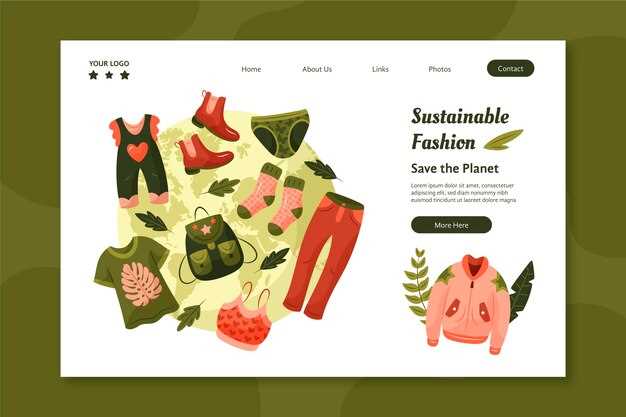
In today’s fast-paced world, where trends come and go in the blink of an eye, it’s essential to pause and consider the impact our fashion choices have on the environment. As we strive for a more sustainable future, it’s time to explore the realm of eco-conscious fashion and embrace the power of our choices to create a greener wardrobe.
With the rise of climate change and the depletion of natural resources, the fashion industry has come under scrutiny for its detrimental effects on the planet. However, there is a growing movement towards sustainable fashion, where designers and consumers alike are seeking innovative ways to reduce waste, conserve energy, and promote ethical practices.
Embracing eco-friendly fashion is not just a passing trend; it’s a mindset shift towards a more responsible and conscious approach to style. By making thoughtful choices, we can contribute to the preservation of our planet while still expressing our unique sense of fashion. From organic fabrics to upcycled materials, there is a world of possibilities waiting to be explored, allowing us to create a wardrobe that not only looks good but also feels good.
When we think of sustainable fashion, it’s important to remember that it encompasses more than just the materials used. It also includes the entire lifecycle of a garment, from production to disposal. By opting for brands that prioritize fair trade, ethical labor practices, and transparent supply chains, we can ensure that our fashion choices align with our values and support a more equitable and sustainable industry.
The Impact of Fast Fashion on the Environment
As we delve into the realm of fashion, it is crucial to acknowledge the significant impact that fast fashion has on the environment. The rapid production and consumption of clothing in the fashion industry have led to detrimental consequences for our planet. This section aims to shed light on the environmental implications of fast fashion, highlighting the need for more sustainable practices in the industry.
1. Overconsumption and Waste
One of the key issues associated with fast fashion is overconsumption. The constant demand for new trends and affordable clothing has led to a culture of disposable fashion, where garments are worn only a few times before being discarded. This excessive consumption results in a staggering amount of waste, with landfills overflowing with discarded clothing items that take years to decompose. The production and disposal of these garments contribute to pollution, greenhouse gas emissions, and the depletion of natural resources.
2. Pollution and Chemical Usage
Fast fashion production processes often involve the use of harmful chemicals and synthetic materials. From the cultivation of raw materials to the dyeing and finishing stages, these processes release toxic substances into the environment. The pollution caused by the fashion industry affects waterways, soil quality, and air quality, posing significant risks to both ecosystems and human health. Additionally, the production of synthetic fibers, such as polyester, contributes to the release of microplastics into the oceans, further exacerbating the global plastic pollution crisis.
- Excessive water usage in textile production
- Release of hazardous chemicals into water sources
- Deforestation for cotton cultivation
- Increased carbon emissions from transportation
It is evident that the fast fashion industry’s practices have far-reaching consequences for the environment. To mitigate these impacts, it is essential for consumers, brands, and policymakers to prioritize sustainable alternatives and promote a circular economy in the fashion industry. By embracing eco-friendly choices and supporting ethical fashion brands, we can work towards a greener and more sustainable future for our wardrobes and the planet.
Understanding Sustainable Fashion: What Does It Mean?
In the realm of conscious consumerism, there exists a growing movement that seeks to redefine the way we approach the world of clothing and style. This movement, often referred to as sustainable fashion, encompasses a range of practices and principles that aim to minimize the negative impact of the fashion industry on the environment and society. It goes beyond the mere act of wearing eco-friendly clothing and delves into the intricate web of production, consumption, and disposal.
At its core, sustainable fashion is about embracing a holistic approach that considers the entire lifecycle of a garment. It is a departure from the fast-paced, throwaway culture that dominates the fashion industry, and instead encourages mindful choices that prioritize longevity, ethical sourcing, and environmental responsibility. Sustainable fashion is not just a passing trend or a buzzword; it is a fundamental shift in mindset that challenges the status quo and calls for a more conscious and compassionate approach to dressing.
One of the key pillars of sustainable fashion is the concept of reducing waste and minimizing the use of finite resources. This involves embracing practices such as upcycling, recycling, and repurposing materials to create new garments, as well as adopting circular economy models that prioritize the reuse and regeneration of resources. By extending the lifespan of clothing and reducing the amount of waste generated, sustainable fashion aims to mitigate the environmental impact of the fashion industry, which is notorious for its contribution to pollution, deforestation, and resource depletion.
Another crucial aspect of sustainable fashion is the promotion of fair and ethical labor practices. This means ensuring that the people involved in the production process are treated fairly, paid a living wage, and provided with safe working conditions. Sustainable fashion seeks to address the social injustices that often accompany the fast fashion model, where workers are exploited and marginalized. By supporting brands and initiatives that prioritize transparency and ethical sourcing, consumers can contribute to the empowerment and well-being of workers in the fashion industry.
Ultimately, understanding sustainable fashion means recognizing the interconnectedness of our choices and their impact on the world around us. It means embracing a mindset of conscious consumption, where we consider not only the aesthetic appeal of a garment but also its environmental and social footprint. By making informed choices and supporting brands that align with our values, we can collectively work towards a more sustainable and equitable future for the fashion industry.
Choosing Organic Fabrics: A Step Towards Sustainability
When it comes to making eco-friendly choices for a more environmentally conscious wardrobe, one important aspect to consider is the type of fabrics we choose. Opting for organic fabrics is a significant step towards sustainability and reducing our impact on the planet.
The Benefits of Organic Fabrics
Organic fabrics are made from materials that are grown without the use of synthetic pesticides, fertilizers, or genetically modified organisms (GMOs). This cultivation process helps to protect the soil, water, and air from harmful chemicals, making it a more sustainable choice.
Additionally, organic fabrics are often produced using less water and energy compared to conventional fabrics. This reduces the overall carbon footprint associated with their production and contributes to a greener fashion industry.
Types of Organic Fabrics
There are various types of organic fabrics available, each with its unique characteristics and benefits. Some popular options include:
- Organic Cotton: Grown without the use of synthetic chemicals, organic cotton is softer and hypoallergenic, making it ideal for sensitive skin.
- Organic Linen: Made from flax plants grown without pesticides, organic linen is breathable, durable, and biodegradable.
- Organic Hemp: Known for its strength and versatility, organic hemp is a sustainable alternative to synthetic fabrics and requires minimal water and pesticides to grow.
- Organic Bamboo: Fast-growing and requiring no pesticides, organic bamboo is a renewable resource that produces soft and comfortable fabrics.
By choosing organic fabrics, we support sustainable farming practices, reduce our exposure to harmful chemicals, and contribute to a greener and more ethical fashion industry. Making conscious choices about the materials we wear is a small but significant step towards a more sustainable future.
Embracing Second-Hand Fashion: The Thrift Store Revolution

In today’s era of conscious consumerism, there is a growing movement towards embracing second-hand fashion as a means to promote sustainability and reduce our environmental impact. This revolution is fueled by the recognition that our choices in clothing can have a significant effect on the planet, and that opting for pre-loved garments can be a powerful way to make a positive change.
The Appeal of Second-Hand Fashion
One of the key reasons why second-hand fashion is gaining popularity is its unique appeal. Unlike mass-produced clothing found in traditional retail stores, thrift stores offer a treasure trove of one-of-a-kind pieces that allow individuals to express their personal style in a truly distinctive way. From vintage finds to designer gems, the thrill of uncovering hidden fashion gems adds an element of excitement to the shopping experience.
Environmental Benefits
By embracing second-hand fashion, we can significantly reduce the demand for new clothing production. The fashion industry is known for its heavy reliance on natural resources, such as water and energy, as well as its contribution to pollution and waste. Opting for second-hand garments helps to extend the lifespan of clothing items, preventing them from ending up in landfills and reducing the need for new production. This, in turn, conserves resources and minimizes the environmental footprint associated with the fashion industry.
Moreover, second-hand fashion also plays a role in reducing carbon emissions. The production and transportation of new clothing items contribute to greenhouse gas emissions, while purchasing pre-owned garments eliminates the need for these processes. By choosing second-hand fashion, we can actively contribute to the fight against climate change.
Embracing second-hand fashion is not only a sustainable choice but also an opportunity to support local communities. Thrift stores often operate as non-profit organizations or contribute to charitable causes, making every purchase a way to give back and make a positive social impact.
In conclusion, the thrift store revolution offers a unique and exciting way to embrace sustainable fashion. By opting for second-hand garments, we can express our personal style, reduce our environmental impact, and support local communities. Let’s join the movement and make a difference, one pre-loved fashion find at a time!
Supporting Ethical Fashion Brands: Making a Difference
Embracing a conscious approach to fashion goes beyond just making eco-friendly choices for a more sustainable wardrobe. It also involves supporting ethical fashion brands that prioritize fair labor practices, promote social responsibility, and contribute to positive change in the industry. By aligning our values with our purchasing decisions, we can make a significant difference in the fashion world.
The Power of Ethical Fashion

Choosing to support ethical fashion brands means recognizing the impact our clothing choices have on both people and the planet. These brands prioritize transparency, ensuring that their supply chains are free from exploitation and that workers are paid fair wages. By investing in ethical fashion, we can help create a more equitable and just industry, where workers are treated with dignity and respect.
Driving Change Through Consumer Demand
As consumers, we have the power to drive change in the fashion industry. By actively seeking out and supporting ethical fashion brands, we send a clear message to the industry that we value sustainability, ethical practices, and social responsibility. This demand for ethical fashion encourages other brands to reevaluate their practices and make positive changes, ultimately leading to a more sustainable and ethical fashion industry as a whole.
Supporting ethical fashion brands also means embracing a slower and more mindful approach to consumption. Instead of constantly chasing the latest trends and buying into fast fashion, we can invest in high-quality, timeless pieces that are ethically made and designed to last. By doing so, we reduce our environmental footprint and contribute to a more sustainable fashion ecosystem.
In conclusion, supporting ethical fashion brands is not only about making a personal style statement but also about making a positive impact on the world. By choosing brands that prioritize ethical practices, we can contribute to a more sustainable, fair, and responsible fashion industry, one purchase at a time.
Extending the Lifespan of Your Clothes: Tips for Sustainable Wardrobe Maintenance
In this section, we will explore effective strategies for maintaining and caring for your clothes in a way that promotes sustainability and extends their lifespan. By implementing these tips, you can reduce waste, save money, and contribute to a greener fashion industry.
1. Embrace proper washing techniques: Opt for cold water washes whenever possible, as this not only saves energy but also helps preserve the color and shape of your garments. Additionally, consider using eco-friendly detergents that are free from harmful chemicals and toxins.
2. Practice responsible drying: Air drying your clothes is not only energy-efficient but also gentler on the fabric. If you prefer using a dryer, choose the lowest heat setting and remove the clothes while they are still slightly damp to prevent over-drying and unnecessary wear and tear.
3. Mend and repair: Instead of discarding clothes with minor damages, learn basic sewing skills to mend small tears, replace buttons, or fix loose hems. By repairing your garments, you can extend their lifespan and reduce the need for constant replacements.
4. Rotate and store with care: Give your clothes a break by rotating them regularly. This helps distribute the wear and tear more evenly and prevents certain items from being overused. When storing your clothes, make sure they are clean and dry to avoid mold or mildew growth. Use breathable storage containers or garment bags to protect them from dust and pests.
5. Invest in quality pieces: When building your wardrobe, prioritize quality over quantity. Choose well-made garments that are durable and timeless in style. Investing in high-quality pieces may initially cost more, but they will last longer and save you money in the long run.
6. Donate or swap: Instead of throwing away clothes that no longer fit or suit your style, consider donating them to charities or participating in clothing swaps with friends or local communities. This way, your unwanted garments can find new homes and be enjoyed by others.
7. Educate yourself: Stay informed about sustainable fashion practices, such as ethical manufacturing, eco-friendly materials, and fair trade. By educating yourself, you can make more conscious choices when purchasing clothes and support brands that align with your values.
By implementing these tips for sustainable wardrobe maintenance, you can reduce your environmental impact and contribute to a more sustainable fashion industry. Remember, small changes in how we care for our clothes can make a significant difference in the long run.
